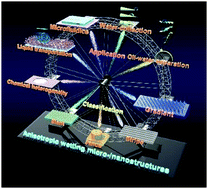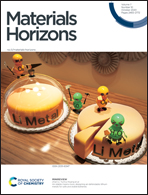Micro-/nanostructures meet anisotropic wetting: from preparation methods to applications
Abstract
A surface is said to be isotropic in wettability when the contact angles measured in all direction are identical. On the contrary, once a surface shows distinct contact angles in “specific” but not random directions, the surface is considered to show anisotropic wetting, accompanied by anisotropic droplet spreading (in cases with greater wetting) or anisotropic droplet movement (in cases with greater anti-wetting). Anisotropic wetting occurs when the liquid contact line encounters physical asymmetry or chemical heterogeneity present on a solid surface. In recent years, anisotropic wetting surfaces have attracted wide scientific attention for both fundamental research and practical applications. Controllable directional liquid transportation, as a promising and important form of intelligent liquid manipulation, plays an important role in lots of fields. In nature, anisotropic wettability has been observed on a variety of biological surfaces, such as rice leaves, butterfly wings, desert beetle elytra, spider silks, cactus spines, and Nepenthes alata peristomes. Inspired by biological surfaces with anisotropic wetting properties, researchers have made great progress in the design and fabrication of micro-/nanostructures with the desired anisotropic wettability. This review focuses on typical and recent advances in the areas of natural and artificial anisotropic wetting surfaces, mainly based on micro-/nanostructures, and on their preparation methods and applications in liquid transportation, microfluidics, fog harvesting, and oil–water separation. Furthermore, potential applications of anisotropic wetting micro-/nanostructures in microreactors, biomedical devices, and sensors are presented.

- This article is part of the themed collection: Recent Review Articles


 Please wait while we load your content...
Please wait while we load your content...